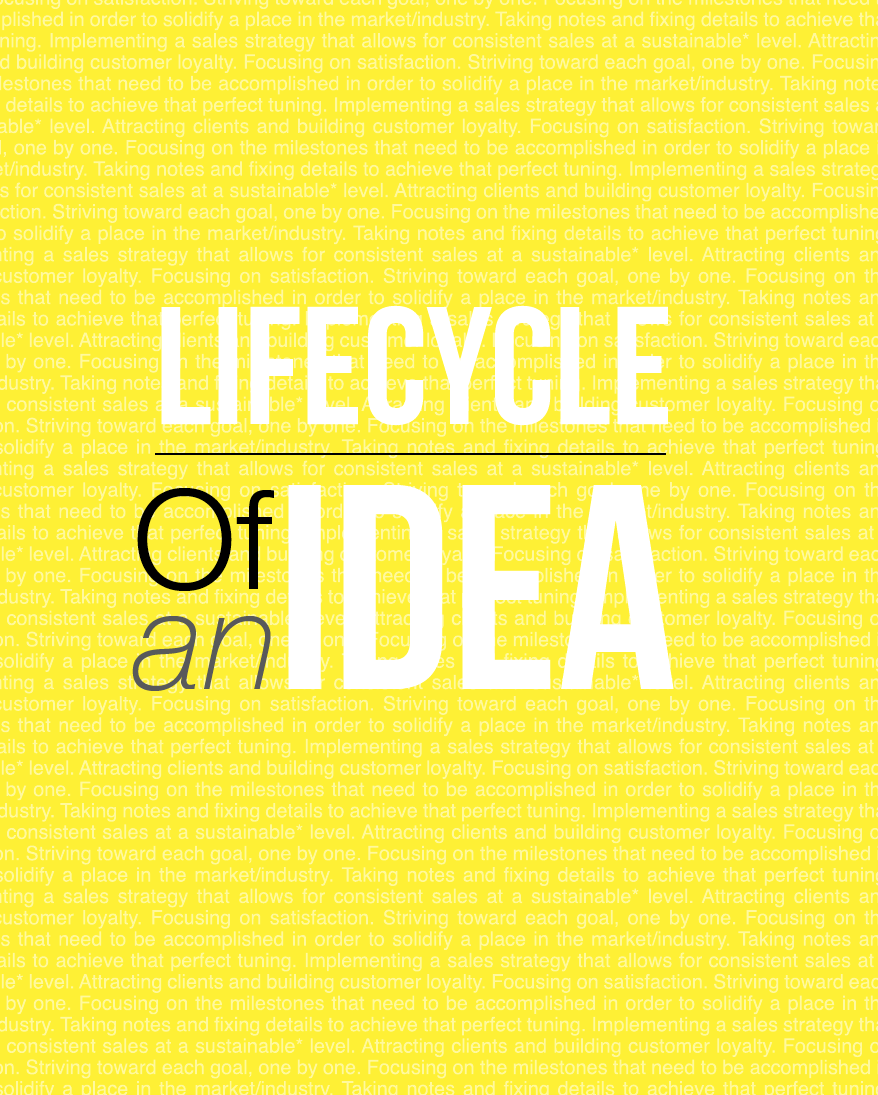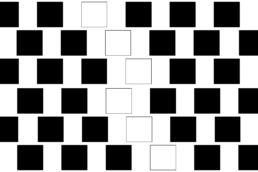- Home
- Simplicity
- Lifecycle of an Idea
Lifecycle of an Idea
Concept
A fantastic idea has been developed that will accomplish X, Y, and Z. At this stage, the focus is on the idea, conception, goal and inspiration rather than facts and research.
Development
Determining if there is a market for the product or service is the next logical step for an organization. Research and development, along with electing how the offered solution will increase revenue or reduce any costs for the consumer is a key aspect in moving to further realization.
Seed
Product development is finalized and the preparations for market introduction begin. Gathering an increased amount of feedback from testing assists in perfecting the product abilities. This is the optimal time to focus on overcoming the challenge of being the “new kid on the block” and strategizing for acceptance. Concentrating on matching any opportunities with existing skills, experiences and passions – all this, paired with the considerations necessary in finding professional advisors and continuing with planning, strategizing and engaging in market research.
Immersion
As the project becomes manifest, a transition occurs into the most delicate phase in its life cycle. The main hurdle becomes accomplishing as much as possible with the low and unsteady revenue stream – in effect, doing more with less. Immersion is crucial in this stage, building up and pouring all energy into the project process and vision.

Early Stages
The early stage focus is on milestones that need to be accomplished in order to solidify a place in the market/industry. At this point, the team should be taking notes and optimizing details to achieve a fine-tuned, well-implemented strategy that allows for consistent sales at an enduring level. Attracting clients and building customer loyalty will encompass the mission of achieving user satisfaction. The budget is subject to multiple revisions, and any possible extra funds should be stored in the event of an unexpected circumstance hindering project implementation.
Breakeven/Established
Achieving profitability, using gathered revenue to perfect products, expanding market development and providing support for current and new customers has become routine and as essential as breathing. Creating new jobs, expanding employee base, and building the best team for the organization – this stage is all about improving relationships with both customers and employees. Thriving in an established place in the market with a loyal group of customers, the audience.
Growth/Expansion
Generating profits, gaining market share, contributing to the industry. Considering public and private trade, acquiring or being acquired by other companies/businesses/ organizations. A new stage, epitomized by a period of growth into new markets and channels. If any merging is considered, research must be done to ensure those partnering companies complement the original one, ensuring mutual benefit.
Photo by Moose Photos from Pexels
Next Item
Innovation

Building Infrastructure
Organizational structures are built block by block - consisting of values, ideals and beliefs. Separately, they are abstract, but come together to form a narrative infrastructure. This is the framework for which a brand forms and comes into being,…
Cognitive Fluency
In the realm of user experience (UX) design, cognitive fluency plays a significant role in creating frictionless experiences. By presenting information in a way that is easy to understand and navigate, designers can increase the likelihood of a…
From Chaos to Order
DISCOVER Ideate, Collaborate, DraftCREATE Organize, refine and sort material until a structure developsDEFINE Develop a framework that will help define goals and values


